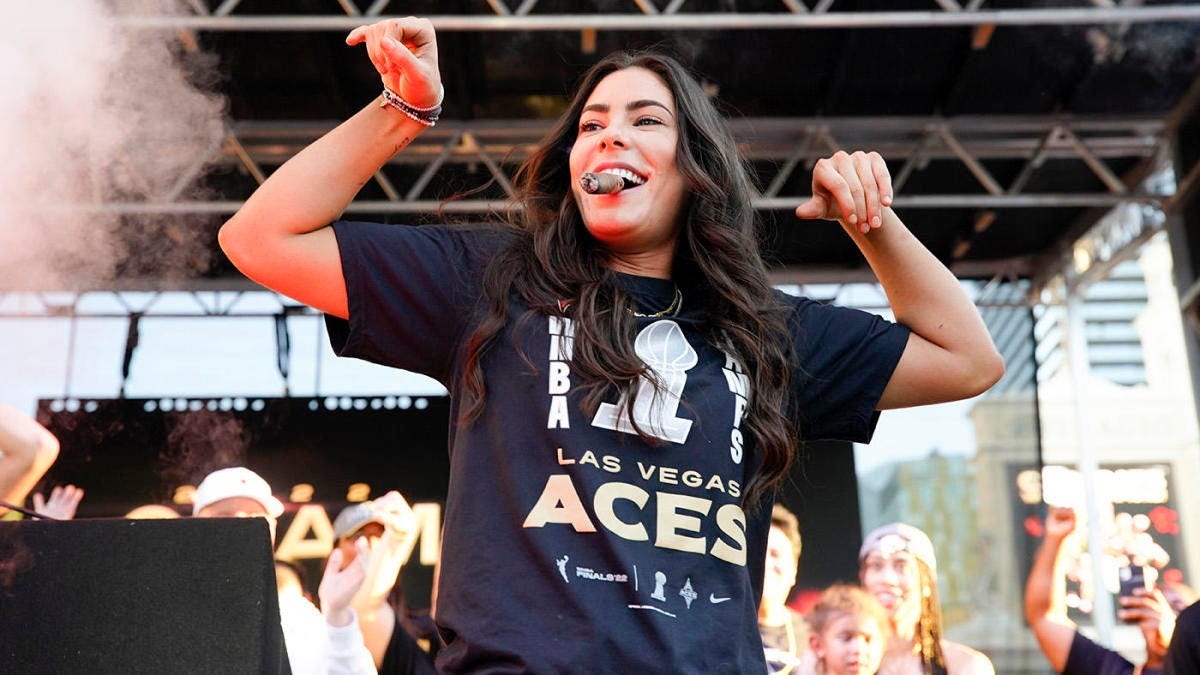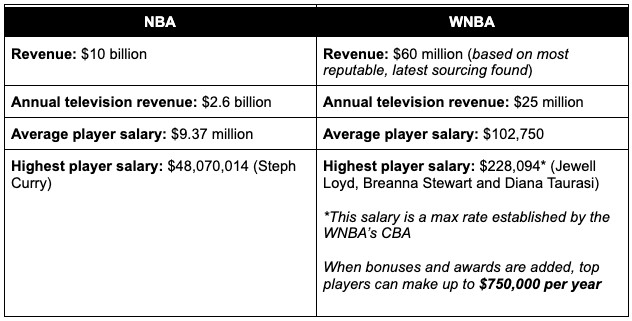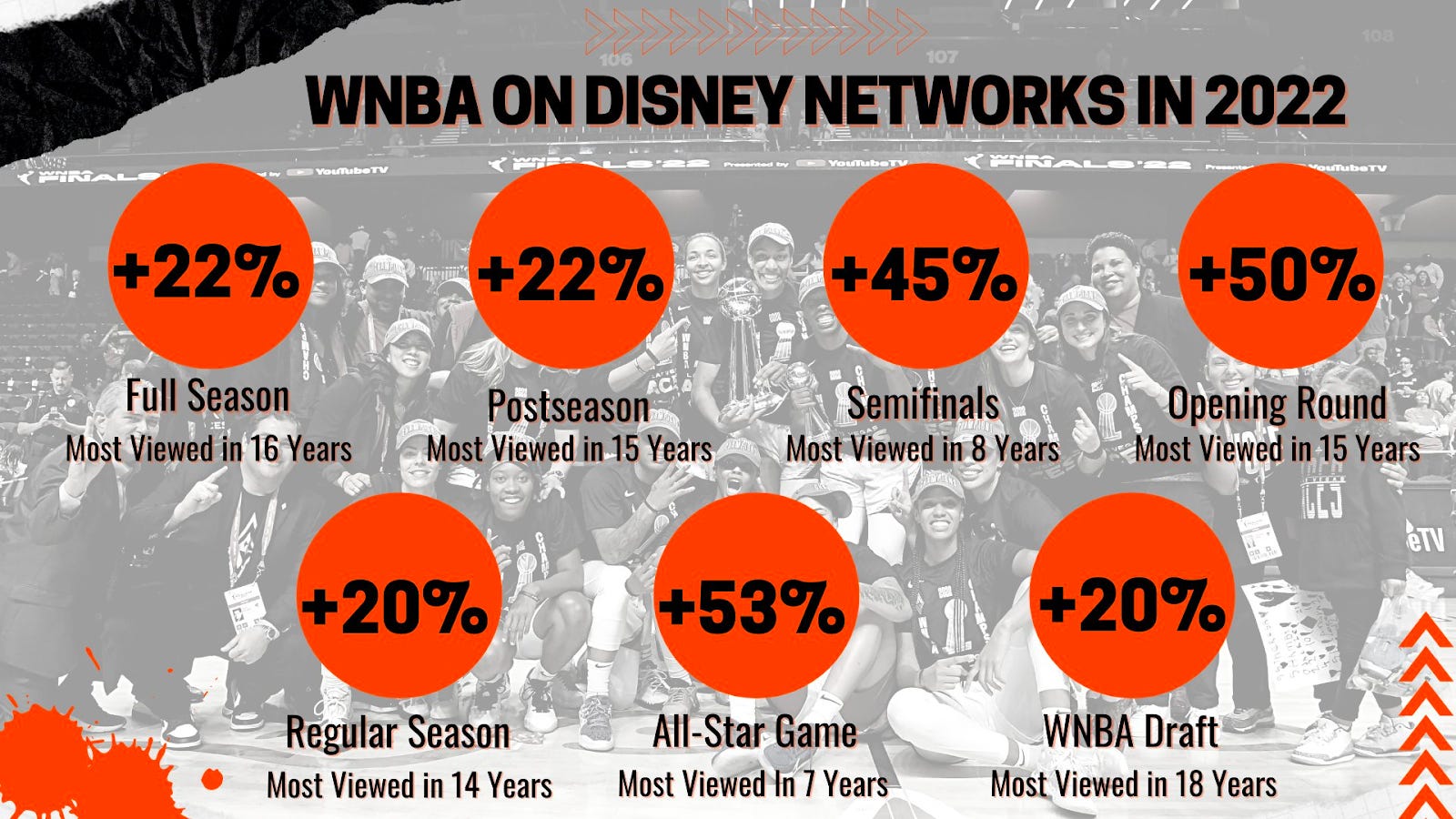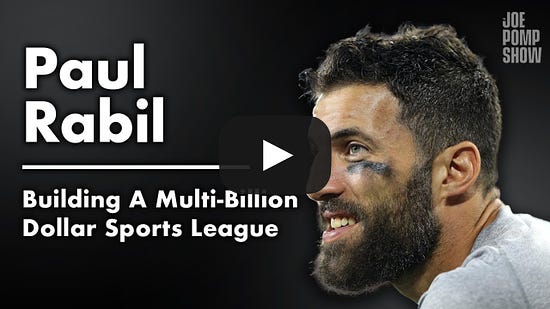The Differences Between NBA & WNBA Salaries
If you are not a subscriber of Huddle Up, join 71,000 other professional athletes, business executives & casual sports fans that receive it directly in their inbox each morning — it’s free. This Email Is Sponsored By…Sorare is one of the fastest-growing companies in sports. Backed by superstar athletes like Lionel Messi, Kylian Mbappé, Rudy Gobert, Aaron Judge, and Serena Williams, they have built blockchain technology that allows fans to collect officially licensed NFT-backed player cards. Sorare, which started in Europe with fantasy football games, recently launched exclusive licensing deals with the MLB/MLBPA and NBA/NBPA to create a custom fantasy game for each sport. The concept is simple: Sorare lets you buy, sell, trade, and earn digital trading cards of your favorite players. But rather than just looking at them as a digital collectible, you can use these trading cards to enter fantasy sports competitions for prizes/rewards. So go check them out and use my link below for a free limited card — it’s free to get started! Hey Friends, A viral clip is going around the internet that discusses the compensation differences between the NBA and WNBA. The comments were made by Las Vegas Aces star Kelsey Plum on The Residency Podcast, and here’s the full transcript:
Plum also acknowledged that the WNBA is still a young league and needs to make similar progressive steps to the NBA. But the video has several million views on Twitter, and ESPN’s post on Instagram has garnered 550,000 likes in just three days. That has come with a lot of discourse and dialogue — some which are accurate and helpful, and some which are neither. So for today’s email, I will explain how the WNBA’s CBA works and what differences there are to the NBA. Perhaps the most significant difference between the NBA’s collective bargaining agreement and the WNBA’s is the simplicity with which it was constructed. For example, the NBA’s CBA can be summarized in one sentence: NBA players get a 50/50 split on all revenue generated from TV contracts, merchandise sales, ticket sales, and more. As for the WNBA, it gets a bit more complicated. For example, it’s true that WNBA players get a 50/50 split of revenue, but that only happens when the league surpasses specific (and complex) “cumulative” growth targets. So to put it simply — if the WNBA does not meet revenue growth targets, no revenue is shared. And even if that target is met, half of that 50% to WNBA players (25%) goes directly to player compensation, while the other 25% goes to the league marketing agreement pool distributed among players. The goal of this compensation structure was to help facilitate league growth by reinvesting in the parent company, potentially getting the WNBA closer to the NBA. And that growth plan is working. For example, WNBA viewership on Disney was up 22% last year. The 2022 WNBA playoffs set a 15-year viewership record, and the league set a digital engagement record of 186 million video views on social media last year. And this success enabled the WNBA to complete its first-ever capital raise, bringing in $75 million at a $1 billion valuation from two dozen investors, including Nike, Condoleezza Rice, Laurene Powell Jobs, Pau Gasol, and NBA and WNBA team owners. For context, before the capital raise, NBA owners owned a 50% equity stake in the WNBA, and the other 50% was owned by the 12 WNBA team owners (five of those 12 also own NBA teams). Of course, there is still a ways to go before multi-million-dollar salaries become common in the WNBA — the league only has 12 teams (compared to 30 in the NBA), and per-game attendance is relatively low, ranging from 10,631 for the Seattle Storm to just 1,776 for the Indiana Fever. But the WNBA’s collective bargaining agreement is up for renewal in 2025, and I would be surprised if WNBA players don’t get a more significant piece of the pie. I hope everyone has a great weekend. We’ll talk on Monday. Your feedback helps me improve Huddle Up. How did you like today’s post? Loved | Great | Good | Meh | Bad Paul Rabil: Why Lacrosse Will Be America’s Next Major SportIf you are not a subscriber of Huddle Up, join 71,000 other professional athletes, business executives & casual sports fans that receive it directly in their inbox each morning — it’s free.
© 2022 |





